News
What’s So Special About Truk Lagoon?
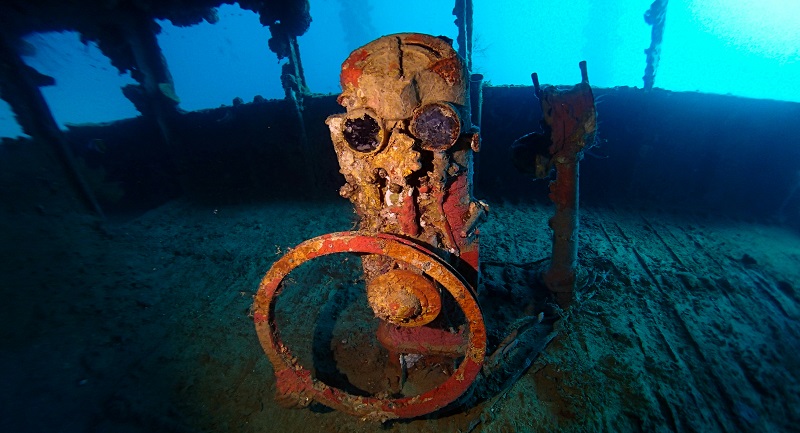
A rusty medical box, the embossed cross still visible on the front, sits atop the superstructure, now filled with a mismatched collection of bottles. We drop over the side and descend past the peeling layers of rust until we spot the inviting darkness of an open doorway. Gently cruising into the gloom, our torchlight catches on a rectangular frame.
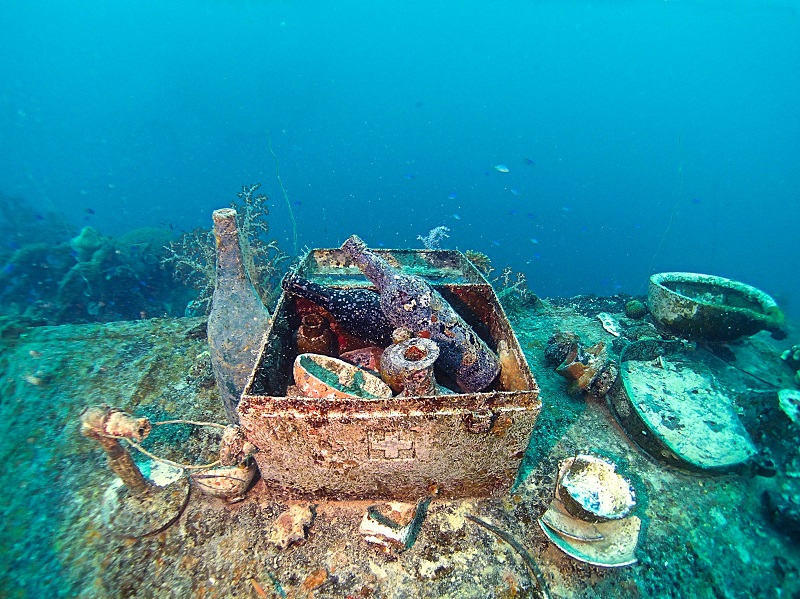
On closer inspection, we realise we’ve found the sick bay. An autoclave full of silt rests in the corner and a precariously perched drawer contains glass syringes, now yellowed, broken and dusty. The operating table, topped with a neatly stacked pile of bones serves as a disturbing reminder of those that died when this ship went down. More disconcerting perhaps is the knowledge that the deaths occurred in another part of the ship and the bones have later been relocated for photographic purposes.
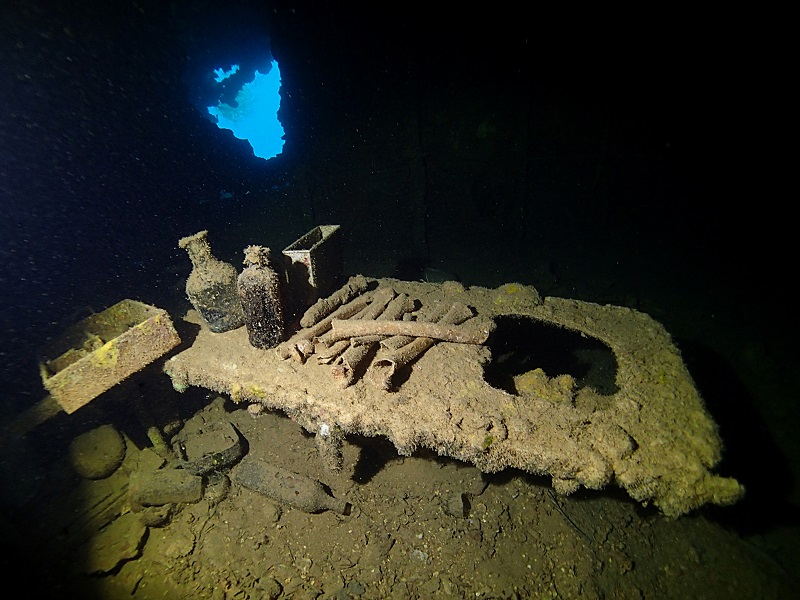
For most, Truk Lagoon is the ultimate wreck diving hotspot, a once in a lifetime destination and the pinnacle of their wreck diving aspirations. Truk virgins may assume that the diving will be something similar to Scapa, just with warm, clear water and more fish. They are at least partly correct. With temperatures around 28oC year round and viz ranging from 10 to 30 metres, it is very comfortable diving.
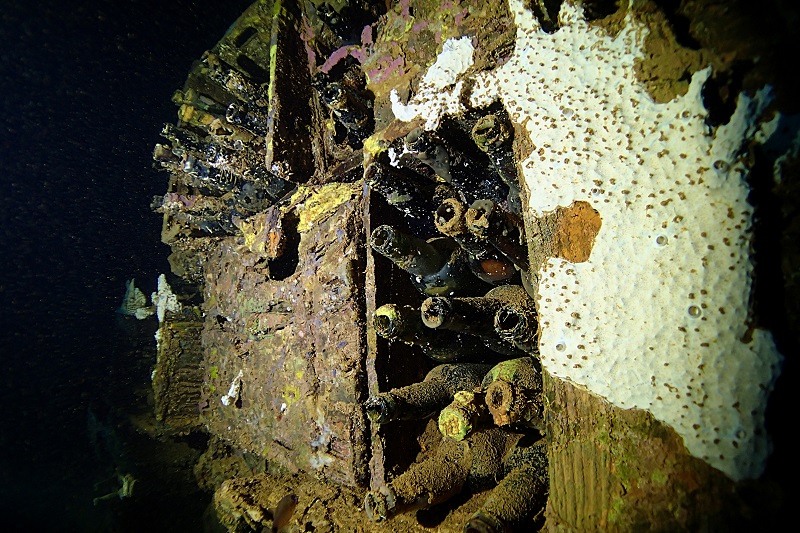
Some wrecks are so densely encrusted with coral that you can hardly make out the ship beneath and what features are visible may be obscured by clouds of fusiliers darting around in a blur of blue and gold. Jacks, barracuda and sharks also make frequent appearances, cruising around in the blue or buzzing past as you ascend the line.
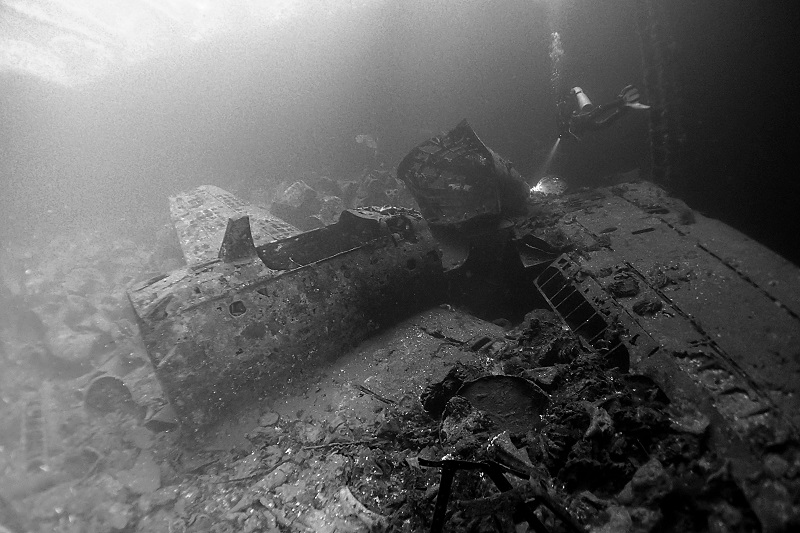
There are however no battleships in Truk. In fact, there are only two diveable warships, both destroyers. The big draw, and what you will spend most of your time diving, is the cargo ships. With minimal salvage and strict ‘no take’ rules, the contents are largely intact and there are artefacts scattered everywhere. It’s this that makes Truk stand out as the premier wreck diving location and it’s the reason so many of us make the arduous pilgrimage to this remote cluster of islands, to see the wonder for ourselves.
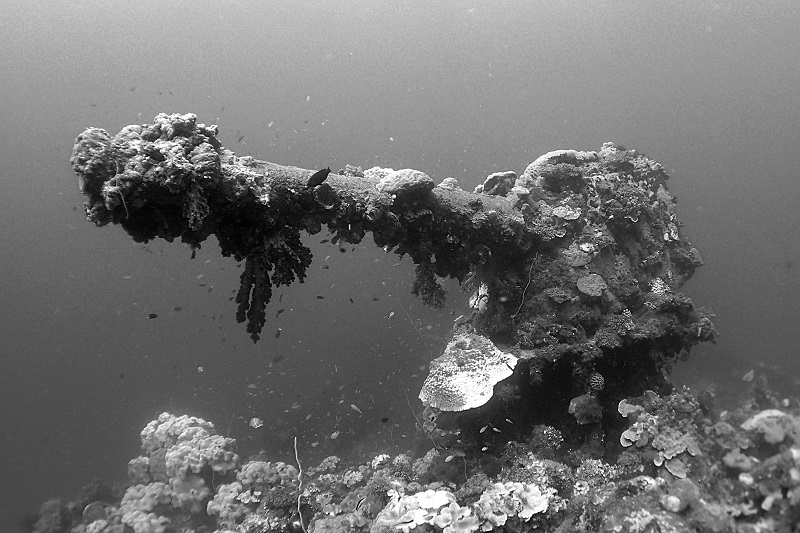
As wartime wrecks, the first thing most divers expect to see are weapons. Two depth charges and their associated launchers perch on the port side of the destroyer, Fumitsuki, with shell casings lying on the sand below. Rail tracks wind around the deck, once used for moving torpedoes to the launchers. Further forward you’ll find one such launcher, a sizeable triple barrelled affair that fired the 9m Long Lance torpedoes that you’ll see elsewhere. On the cargo ships, you’ll see deck mounted machine guns, 6 inch bow guns and artillery guns. Some of these weapons, like the wheeled field cannon on the bow of the Seiko Maru, were already obsolete before the start of the war and were used primarily as a decoration to boost morale.
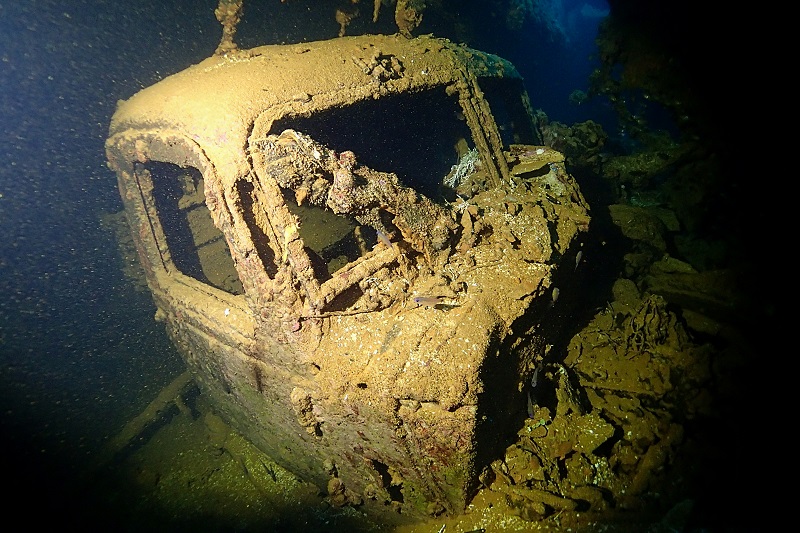
Vehicles are another popular target and the holds of these wrecks do not disappoint. The Hoki Maru carried a construction battalion, most likely destined for runway building. Drop down past the huge curved blade of the bulldozer and the tell tale cylindrical drum of the pavement roller and you’ll find a neat row of well preserved pick up trucks, ripe for exploration. On the Fujikawa Maru you’ll find numerous zero fighters. Among the mess of wings, engines, propellers and cockpits, there are a few aircraft still largely intact. Elsewhere you may see a tank or two or even some bicycles, clearly the war time chariots of choice.
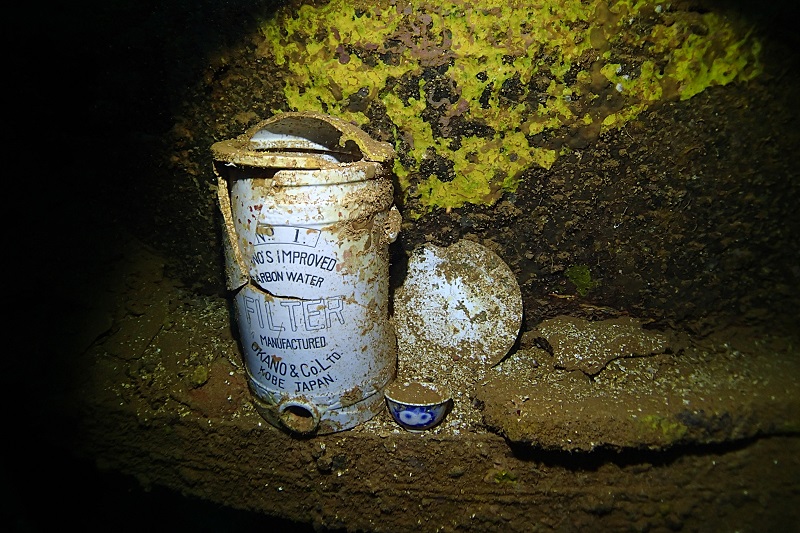
Given the remote location, the Japanese had to import all of their food, water and equipment. You’ll see essentials such as water tanks, pressure cookers and mess kits, however a surprising amount of their limited space was dedicated to beer. Bottles can be found on most of the wrecks but some, like the Rio de Janeiro Maru, have whole cargo holds full of them, still neatly packed in the remains of their wooden crates.
Then there are the wrecks themselves. Several have intact superstructures so you may be able to explore the bridge to see the helm and telegraphs or penetrate the captain’s quarters. There are ballrooms with panoramic windows, the supporting columns for the ceiling now twisted and warped; dining rooms with the metal bases of tables sprouting from the floor; and even a galley complete with stove, extractor fan and pots scattered on the counter.
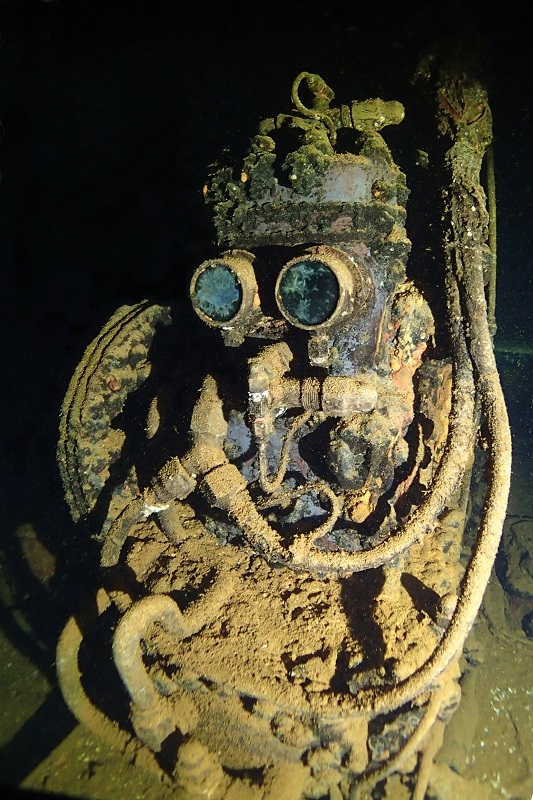 The anthropomorphic air compressor known as R2D2 can be found deep inside the machine shop of the Fujikawa Maru. Exploring further, you’ll find a perfectly preserved drill press and lathe along with cage light bulbs and fans neatly organised on the shelves of the adjacent store room.
The anthropomorphic air compressor known as R2D2 can be found deep inside the machine shop of the Fujikawa Maru. Exploring further, you’ll find a perfectly preserved drill press and lathe along with cage light bulbs and fans neatly organised on the shelves of the adjacent store room.
The engine rooms are a firm favourite and with several levels of intact machinery, in depth penetrations are the norm. Enter the torpedo hole on the Shinkoku Maru and make your way past the uniform row of generators. Gradually work your way up the narrow metal stairs, around cylinder heads and along catwalks to the skylights above. Elsewhere, the gigantic spanners may make you wonder how many men it would take to successfully tighten a nut. One engineer even died at his station and you can still see his skull fused into the metal.
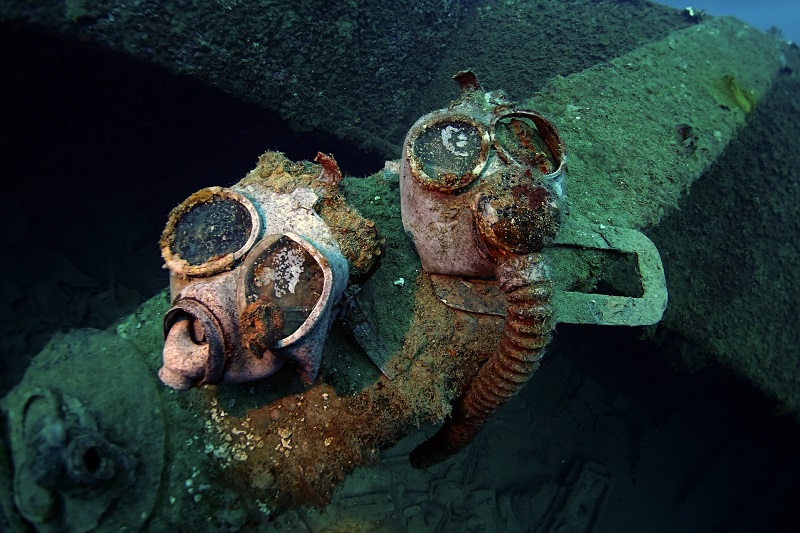
As the curators of this underwater museum, the dive guides polish algal growth from plaques and painstakingly reassemble broken ceramics and pieces of gas masks. They guide visitors through the complex maze of machinery and wreckage pointing out the stacks of periscopes, jumbled heaps of torpedoes and the particular features that make each wreck unique. These ships and their cargo give visitors an unparalleled insight into Japanese Naval life. By preserving these exhibits, the local dive operators ensure that rust hunting pilgrims from around the world will be enthralled for years to come.
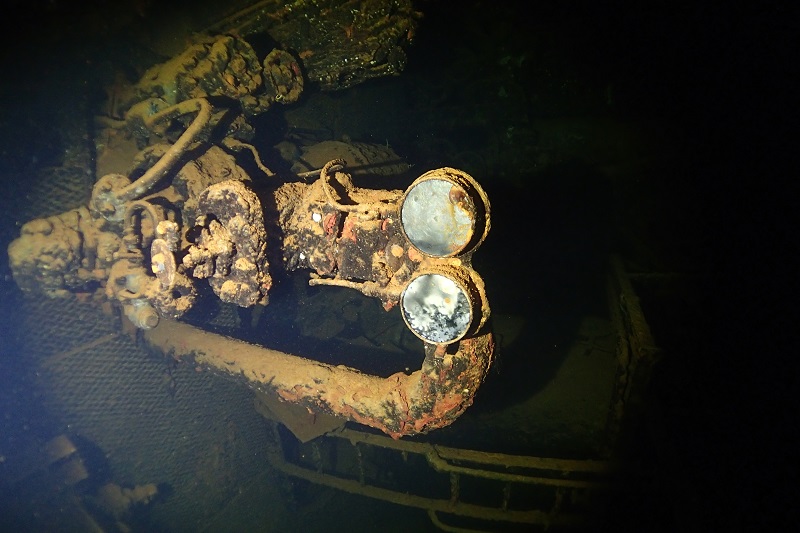
For more from Chris and Maddy visit www.adventureoclock.com
Discover more about DiveQuest diving holidays at www.divequest-diving-holidays.co.uk
Gear News
Introducing the TR-80, IR-50 and CS-30 Regulators from DYNAMICNORD

Whether you are a beginner or a professional diver – with the three new main regulators from DYNAMICNORD, everyone will find their favourite regulator. They all look super stylish.
Excellent performance with the TR-80
Quality and performance are the be-all and end-all for regulators. It is not for nothing that the TR stands for Tec Reg. The innovative design of the TR-80 guarantees absolute reliability – even in ice-cold waters.

Perfect breathing effort at 0.8 J/l / certified for diving in waters below 10 degrees / structural design made of solid brass for best cold protection / membrane-compensated design with dry seal of the first stage / reduced exhalation effort thanks to optimized exhalation membrane and bubble deflector / adjustable Venturi (dive/predive) and adjustment knob for individual inhalation comfort / innovative design of the front cover prevents free-flow in strong currents or when diving with scooters / design made of sandblasted brass, matt chrome finish / 2 HP and 4 LP outlets / mouthpiece made of high-quality, anti-allergic silicone for maximum comfort.


Amazing underwater adventures with the IR-50
The IR-50 is the top regulator for advanced and experienced divers. Natural breathing is the essence of this regulator.

Ideal breathing effort at 0.8 J/l /certified for diving in waters below 10 degrees / compensated membrane / adjustable venturi (dive/predive) and adjustment knob for individual inhalation comfort/ outlet valve and deflector for minimum exhalation effort and reduction of bubbles on the face / design made of sandblasted brass, matt chrome finish / 2 HP and 4 NP outlets / mouthpiece made of high-quality, anti-allergic silicone for maximum comfort.


The Workhorse – our CS-30
For diving centres and diving beginners – the workhorse stands for strong construction, reliability and robustness. Perfect for your training.

Optimal breathing effort at 0.8 J/l /recommended for diving in waters above 10 degrees / non-compensated piston / adjustable venturi (dive/predive) / outlet valve and deflector for minimum exhalation effort and reduction of bubbles on the face / design made of sandblasted brass, matt chrome finish / 1 HP and 3 NP outlets / mouthpiece made of high-quality, anti-allergic silicone for maximum comfort.


Octopus OP-30
The OP-30 is the ideal addition to all DYNAMICNORD regulators. It is identical in construction to the CS-30.

The TR-80, IR-50, CS-30 (DIN & INT) regulators and the Octopus OP-30 are available from DYNAMICNORD dealers and in the online store.
DYNAMICNORD – Your Outdoor Companion.
Marine Life & Conservation
Paul Watson Released as Denmark Blocks Japan’s Extradition Bid

Renowned anti-whaling activist Paul Watson has been released from custody in Greenland after spending five months in detention. Denmark’s Justice Ministry rejected Japan’s request for his extradition, citing insufficient guarantees that his time already served in custody would be credited against any potential sentence.
The 74-year-old Canadian-American was arrested on July 21 in Nuuk, Greenland’s capital, when his ship docked to refuel. His arrest was based on a 2012 Japanese warrant related to a 2010 encounter in Antarctic waters. Japan alleged Watson obstructed operations and caused damage to a whaling research ship during efforts to disrupt illegal whaling. Watson has consistently denied these claims, maintaining his commitment to marine conservation.
Denmark, which oversees extradition matters for Greenland, concluded that while the legal conditions for extradition were met, the lack of assurances from Japan regarding time-served credit made extradition untenable.
In a video shared by his foundation, Watson expressed gratitude and relief, saying, “After five months, it’s good to be out… and good to know they’re not sending me to Japan.” He added that the most difficult part of his time in custody was being separated from his two young sons.
Watson is a pioneering figure in marine conservation, known for founding the Captain Paul Watson Foundation in 2022 after decades of activism with the Sea Shepherd Conservation Society. His bold efforts to defend marine life have earned him widespread support, including from celebrities and conservationists. His work has also been featured in the acclaimed reality TV series Whale Wars.
Watson’s lawyer, Jonas Christoffersen, praised the decision, stating, “We are happy and relieved that Paul Watson is now free.” He added that Watson is eager to reunite with his family and continue his vital work.
The arrest occurred while Watson’s vessel, the M/Y John Paul DeJoria, was en route to the North Pacific with a team of 26 volunteers to intercept a Japanese whaling ship. His foundation described the arrest as politically motivated and emphasized that Watson’s actions were focused on ending illegal whaling practices.
Japan resumed commercial whaling in 2019 after leaving the International Whaling Commission, asserting that whale meat is a cultural tradition. Conservationists, however, continue to challenge these practices, highlighting their impact on marine ecosystems.
Despite the challenges, Watson remains steadfast in his mission to protect marine life and bring attention to whaling practices. His dedication to ocean conservation has made him a globally respected advocate for the environment.
-

 News2 months ago
News2 months agoIconic SS United States to become the World’s Largest Artificial Reef
-

 News3 months ago
News3 months agoBook Review – 52 Assignments: Underwater Photography
-

 Gear News3 months ago
Gear News3 months agoDYNAMICNORD – New German diving brand enters the British market
-

 News3 months ago
News3 months agoExploring Cenote El Pit: A Diver’s Dream
-

 Gear News3 months ago
Gear News3 months agoTry BARE drysuits (and maybe even win one!) this Friday with Sea & Sea at North West Dive Fest
-

 Marine Life & Conservation3 months ago
Marine Life & Conservation3 months agoBook Review: Coral Triangle Cameos
-

 Blogs2 months ago
Blogs2 months agoDive the Egyptian Red Sea this Autumn with Regaldive
-

 News3 months ago
News3 months ago2024 Ocean Art Underwater Photo Competition Announced















